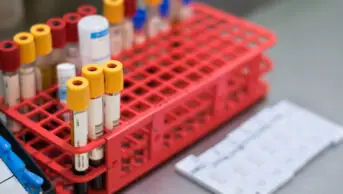The hot summer experienced around the world, leading to uncontrollable wildfires in several locations, has reminded us of the existential dangers of a warming planet. But rather than paralysis through fear, we must surely look for ways that we, as individuals and organisations, can take urgent action to help limit global warming and adapt to its repercussions.
One way of doing this is through education, so I was delighted to note that the organisation Pharmacy Declares, composed of climate conscious pharmacy professionals based in the UK, has now published its guidelines on how pharmacy students can be taught about environmental sustainability during their MPharm degree. To my mind, one topic worthy of particular focus is the emergence of animal and human diseases, including zoonoses linked to climate change. For example, consider a paper published in Nature on 8 August 2023 that states “over half of known human pathogenic diseases can be aggravated by climate change”. Of course, what other significant example of a pathogen transferred from animal to human than the SARS-CoV-2 novel coronavirus, which resulted in the COVID-19 pandemic, bringing much death and destruction, and is still lingering. Among this devastation, papers published this summer, in JAMA Network Open and the New England Journal of Medicine, have also focused on whether COVID-19 is likely or not to be linked with a higher incidence of type 1 diabetes mellitus (T1DM) in children and adolescents. While this debate continues, it is worth remembering that both T1DM and T2DM remain a threat to the health and wellbeing of current and future generations, making it a topic worthy of ongoing research and my focus this month.
The first paper I have selected this month was published in the August 2023 edition of the Journal of Pharmacy and Pharmacology, which publishes an abundance of research papers that focus on whether and how natural products and their constituents might exhibit pharmacotherapeutic potential, therefore logically contributing to new drug discoveries.
This particular paper relates to Centella asiatica (L.) Urb., a plant the authors state has been shown to lower blood glucose in diabetic rats and whose main constituent, madecassoside (MAD), might hold antidiabetic potential, warranting further research. By inducing diabetes in rats, using streptozotocin and nicotinamide, the researchers set up four experimental groups, namely normal control rats treated with the vehicle only (group 1), and ‘diabetic’ rats treated with the vehicle (group 2), MAD (group 3) or resveratrol (group 4), which was used as a positive control. The results are interesting: as well as a reduction in blood glucose and glycated haemoglobin (HbA1c; a marker of blood glucose control), and increases in plasma insulin, rats in group 3 and 4 were also shown to have better pancreatic β-cells structure and function, with some improved enzymatic antioxidants. As ever, it remains for scientists to build on such research.

The next paper that caught my attention was published in RPS Pharmacy and Pharmacology Reports. This was a retrospective cohort study set in tertiary hospitals in Malaysia and compared data on patients who had been initiated on two specific types of antidiabetic medication for T2DM, with various outcomes of interest, including cardiovascular and renal outcomes, clinical laboratory outcomes, and adherence and non-persistence.
The two classes of medicines were sodium-glucose co-transporter 2 (SGLT2) inhibitors and dipeptidyl peptidase-4 (DPP-4) inhibitors. Examples of the former (otherwise known as ‘gliflozins’/‘flozins’) include dapagliflozin, canagliflozin, empagliflozin, ertugliflozin, while examples of the latter (otherwise known as ‘gliptins’) include sitagliptin, saxagliptin, alogliptin, linagliptin and vildagliptin. The rationale given for the study was to provide real-world data on the cardiorenal function and treatment adherence for these newer, more expensive medicines in a middle-income setting with a high prevalence of T2DM.
Both medicines were found to be effective in managing blood glucose levels, with similar clinical effects. Some differences were noted in specific parameters; for example, new users of SGLT-2 inhibitors had greater reduction of HbA1c and were more persistent in their medication taking, while new users of DPP-4 inhibitors had a larger reduction in low-density lipoprotein and total cholesterol levels. What I found particularly interesting was the overall high levels of treatment adherence — around 97% in both users — and low levels of non-persistence (8% for SGLT2 inhibitors and 13% for users of DPP-4 inhibitors). Several reasons were put forward for the adherence-related finding, including that most of the patients were enrolled in the local medication treatment adherence clinic.
The third and final paper I have selected was published in the International Journal of Pharmacy Practice and looked at the impact of the clinical activities of a cardiologist–pharmacist collaborative care model for managing people with cardiovascular diseases and T2DM. This retrospective study was set in China and analysed the records of 420 people, half of whom had received care from cardiologists only.
The authors ultimately associate improvements in HbA1c with the provision of health education and medication adjustments as per the collaborative care model. There is much to unpick and I invite those interested in current and future models of practice to access this paper and read the methods and findings for a detailed examination of the work.
Pharmacists will no doubt remain essential members of healthcare services as we work to tackle the increasing burden of disease in an uncertain future. Efforts to educate pharmacists about the impact of change, continued efforts to find new cures, measure the real-world impact of new medicines across the world and investigate collaborative models of care that include pharmacists at their heart, are all positive steps that give us hope for the future of the world and our place in it.


